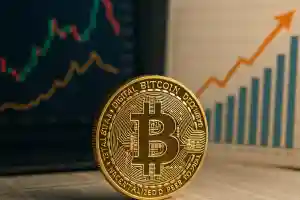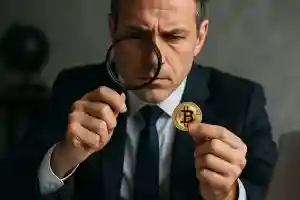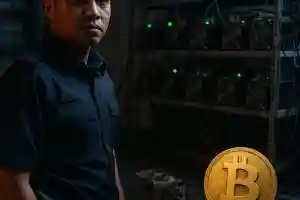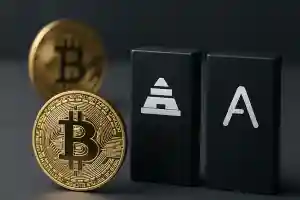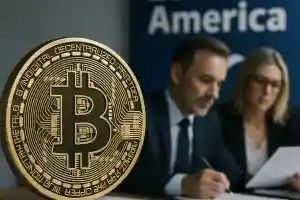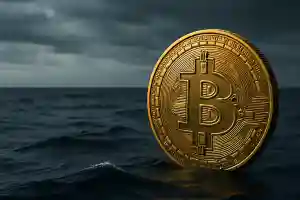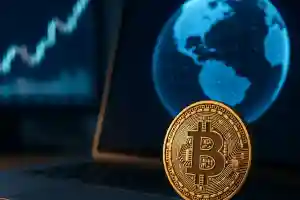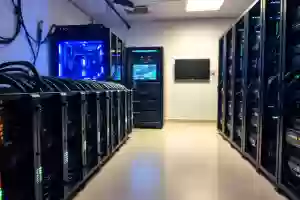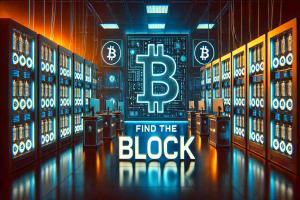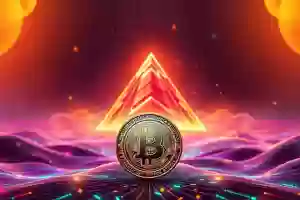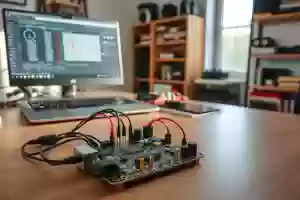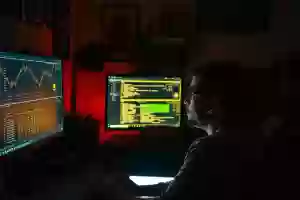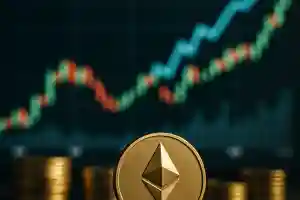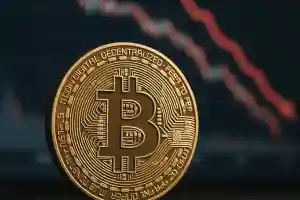The Rise of NFTs: Understanding the Basics
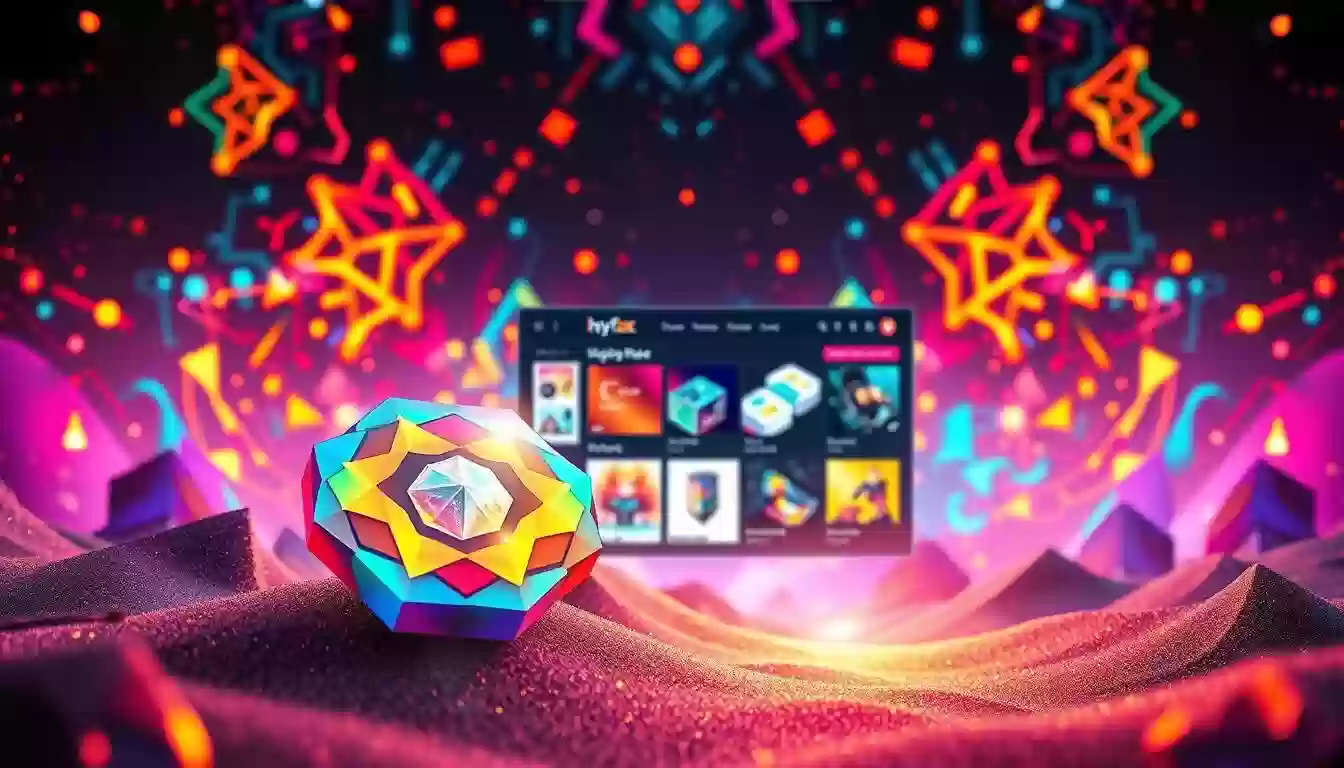 09 Mar 25
09 Mar 25
In the rapidly evolving digital landscape, NFTs have emerged as a groundbreaking concept, revolutionizing how we perceive ownership and authenticity in the digital realm. These unique digital identifiers, recorded on a blockchain, serve as certificates of ownership and authenticity, distinguishing them from fungible assets like cryptocurrencies.
Unlike cryptocurrencies, which are interchangeable, NFTs are distinct and cannot be replicated. This uniqueness has made them particularly popular in the realm of digital art, where creators can now monetize their work in ways previously unimaginable. The evolution from early projects like Quantum to the viral success of CryptoKitties highlights their transformative potential.
The rise of NFTs has been meteoric, with the market surpassing $10 billion in a single quarter and active wallets growing by over 1,700%. This surge underscores their appeal beyond mere collectibles, extending into tokenizing real-world assets and representing ownership in innovative ways.
This article delves into the basics of NFTs, their role in digital art, and the underlying blockchain technology, providing a comprehensive guide for both newcomers and those already familiar with the space.
Introduction to NFTs Fundamentals
Digital innovation has introduced a new way to own and trade unique items online. At the heart of this revolution are non-fungible tokens, or NFTs. These tokens represent ownership of a unique digital item, such as art, music, or even tweets.
Defining Non-Fungible Tokens
A non-fungible token is a digital asset that cannot be exchanged for another identical asset. Unlike cryptocurrencies like Bitcoin, which are fungible, NFTs are unique. For example, a dollar bill is fungible, but a rare painting is not, it’s one-of-a-kind.
The Significance of Digital Ownership
NFTs are created using smart contracts on blockchains, which act as digital receipts. They prove ownership and authenticity without needing legal copyright. This is crucial for digital creators, as it allows them to monetize their work in new ways.
Smart contracts automate the process of creating and transferring NFTs. They ensure that when an NFT is sold, the ownership is transferred securely and efficiently. NFT marketplaces, like OpenSea or Rarible, have become hubs for buying, selling, and trading these tokens.
For instance, CryptoKitties, one of the first NFT projects, allowed users to collect and trade unique digital cats. In 2021, Beeple’s digital art piece sold for $69 million, showing the potential of NFTs in the art world. These examples demonstrate how NFTs empower creators and provide value to collectors.
The Evolution of NFTs Through Early Projects
The concept of unique digital ownership began taking shape in the early 2010s, laying the groundwork for what we now recognize as NFTs. Early experiments and projects were crucial in defining this space.
Quantum, Etheria, and Rare Pepes
One of the pioneering projects was Quantum, launched in 2014, which introduced the idea of a unique digital asset. Following this, Etheria in 2015 explored the concept of virtual real estate, allowing users to purchase and own virtual land. Rare Pepes, emerging later, introduced semi-fungible tokens, blending elements of both unique and tradable assets. These early initiatives set the stage for more sophisticated applications.
Milestones from CryptoPunks to CryptoKitties
The launch of CryptoPunks in 2017 marked a significant milestone, offering unique digital characters that could be bought, sold, and owned. This was followed by CryptoKitties in 2017, which allowed users to collect, breed, and trade virtual cats. These projects not only demonstrated the potential of NFTs but also highlighted the importance of wallet management and the role of marketplaces in facilitating transactions.
As these projects gained popularity, they established the foundation for modern NFT marketplaces, enabling artists and creators to monetize their digital works. The success of these early endeavors paved the way for the vibrant NFT market we see today. For a deeper dive into the history of NFTs, visit our history page.
How NFTs Work on the Blockchain
Understanding how NFTs operate on the blockchain reveals the intricate dance of technology and creativity. This process involves several key steps, from creating the digital asset to transferring ownership securely. Below, we break down the minting process, tokenization, and the role of smart contracts.
The Minting and Tokenization Process
Minting an NFT is the first step in bringing a digital asset to life. This process involves creating a unique token on the blockchain, which can represent anything from a piece of artwork to a video. For example, Beeple’s digital videos are tokenized into unique assets, each with its own identifier. This tokenization process ensures that each digital item is distinct and cannot be replicated.
Smart Contracts and Ownership Transfer
Smart contracts play a crucial role in automating the ownership transfer of NFTs. These self-executing contracts, often built on platforms like Ethereum, outline the terms of the transaction. When an NFT is sold, the smart contract ensures that ownership is transferred securely and efficiently, without the need for intermediaries. This decentralized system is a cornerstone of the blockchain’s trustless environment.
| Sales Method | Features | Example |
|---|---|---|
| Auctions | Competitive bidding, often for high-value assets | Beeple’s artwork at Christie’s auction |
| Direct Purchase | Fixed price, immediate ownership transfer | Buying an NFT on OpenSea |
| timed | Time-limited listings, creating urgency | Temporary listings on Rarible |
From auctions to direct purchases, NFT sales can take many forms. Platforms like OpenSea and Christie’s auctions showcase the variety of methods available. Whether it’s a high-stakes auction or a straightforward purchase, each transaction is facilitated by the blockchain’s robust infrastructure.
NFT Standards and Smart Contract Innovations
Smart contracts have revolutionized how digital assets are created, traded, and owned. At the heart of this innovation are standards like ERC-721 and ERC-1155, which have set the foundation for non-fungible tokens (NFTs) and beyond.
Overview of ERC-721
ERC-721 is a standard on the Ethereum blockchain that enables the creation of unique digital assets. Each token has a distinct identifier, making it impossible to replicate. This standard has been pivotal in the growth of digital art and collectibles, as it ensures authenticity and ownership. For instance, artists can use ERC-721 to create limited-edition pieces, knowing each one is verifiably unique.
Insights into ERC-1155 and Semi-Fungibility
Building on ERC-721, the ERC-1155 standard offers more flexibility by allowing both fungible and non-fungible tokens in a single contract. This innovation is particularly useful for projects that need to handle multiple types of assets. For example, a platform might use ERC-1155 to offer both unique digital art pieces and fungible tokens for in-game items, streamlining transactions and reducing costs.
Smart contracts have also introduced new ways to manage transactions. They automate processes like royalties, ensuring creators receive a percentage of each resale. This feature has been transformative for artists, providing a steady income stream. Additionally, smart contracts eliminate intermediaries, making trading faster and more secure.
These standards have enabled a wide range of applications, from digital art collections to in-game assets. Projects like Axie Infinity and NBA Top Shot have benefited from ERC-721 and ERC-1155, creating vibrant ecosystems where users can buy, sell, and trade unique digital items with confidence.
NFT Applications in Digital Art
Digital art has found a transformative avenue through non-fungible tokens, reshaping how creators monetize their work and how collectors perceive ownership. This section explores the impact of these tokens on the art world, highlighting record sales and the rise of generative art.
High-Profile Auctions and Record Sales
The digital art market has witnessed historic sales, with Beeple’s "Everydays: The First 5000 Days" fetching $69 million at Christie’s. Such auctions underscore the growing value of digital art, challenging traditional norms and attracting both seasoned collectors and new investors.
Generative Art and Collectible Trends
Generative art, created using algorithms, offers unique pieces that vary widely even from the same algorithm. This unpredictability has made it a favorite among collectors, blending human creativity with machine-driven innovation. The trend reflects a shift towards valuing both the artistic process and the technology behind the art.
These tokens have empowered artists by providing a direct monetization route, ensuring they receive royalties even on resales. This financial incentive has attracted many creators, adding significant value to their work. While the market shows speculative tendencies, the enduring appeal of unique, verifiable ownership suggests a stable future for digital art.
NFTs in Gaming and Virtual Worlds
The integration of blockchain technology has brought about a seismic shift in the gaming industry, offering players unprecedented control over their in-game assets. This transformation has not only enhanced gaming experiences but also opened new avenues for monetization and engagement.
User-Controlled In-Game Assets
One of the most significant advancements is the ability for players to own and trade unique digital items. These assets, ranging from digital cards to virtual real estate, are securely recorded on the blockchain, ensuring authenticity and transferability. For instance, platforms like Axie Infinity allow players to collect, breed, and battle creatures, each represented as a unique token on the blockchain.
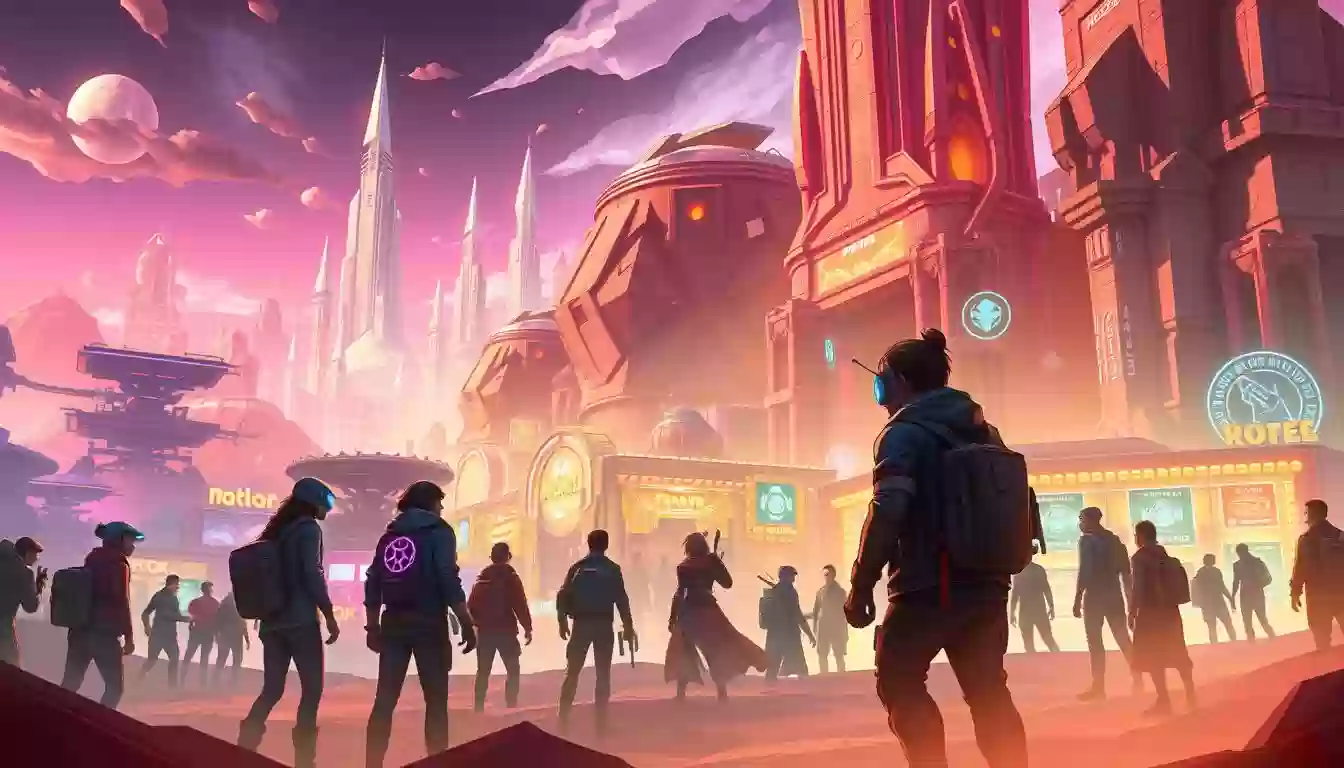
The technology behind this innovation relies on smart contracts, which automate the creation and transfer of these assets. Games like The Sandbox have taken this a step further, enabling players to create and sell their own in-game items, fostering a vibrant digital economy. This shift has transformed traditional gaming into a crypto-integrated experience, where players are not just participants but also investors and creators.
Notable projects demonstrate the potential of blockchain-based gaming. For example, in Axie Infinity, rare in-game creatures have sold for over $100,000, highlighting the real value these digital assets can hold. Similarly, Gods Unchained offers collectible cards with varying rarities, each verifiable through blockchain technology, ensuring their scarcity and authenticity.
This evolution is more than just a trend; it's a fundamental change in how crypto and technology intersect with entertainment. As more gamers embrace this model, the future of gaming promises to be even more interactive, rewarding, and financially empowering for players worldwide.
NFTs in Music and Film
The entertainment industry is embracing new technologies to redefine how content is created, distributed, and owned. Blockchain technology has opened doors for innovative distribution models, enabling direct connections between creators and their audiences.
Innovative Entertainment Integrations
Artists and filmmakers are leveraging cryptocurrency and smart contracts to transform traditional distribution methods. For instance, musicians can release exclusive tracks or albums as unique digital assets, ensuring authenticity and ownership. Similarly, filmmakers can offer behind-the-scenes footage or special edition content through these tokens.
Royalties, Licensing, and Digital Releases
One significant advantage for creators is the ability to secure royalties through smart contracts. Each resale of a digital asset can generate income, creating a sustainable revenue stream. For example, Sony Music Entertainment France has experimented with issuing tokens to provide new value to both creators and fans.
Fans benefit by owning unique content, such as limited-edition NFTs or exclusive access to future projects. This not only enhances engagement but also builds a stronger connection between creators and their audience. For users, this means more personalized and valuable experiences.
The impact on traditional media distribution is profound. Data shows that NFTs allow for fractional ownership of film rights, attracting a broader range of investors. This model democratizes funding and distribution, offering new opportunities for independent creators. As the industry evolves, the integration of cryptocurrency and blockchain technology promises to redefine entertainment economics.
The Role of Blockchain in NFT Authenticity
Blockchain technology plays a pivotal role in ensuring the authenticity of digital assets, making it a cornerstone of trust in the digital marketplace. By providing a transparent and immutable ledger, blockchain allows both buyers and owners to verify the legitimacy of their assets without reliance on intermediaries.
Decentralized Verification Systems
Decentralized verification systems are essential in preventing fraud. These systems ensure that each asset is unique and cannot be replicated, which is crucial for maintaining the integrity of digital ownership. For instance, the Ethereum blockchain offers a robust framework where every transaction is recorded publicly, making it impossible to alter or forge ownership details.
Buyers and owners can rely on the Ethereum blockchain as an unshakeable proof of transaction history. This transparency not only builds trust but also ensures that the price integrity of assets is maintained. Immutable blockchain records guarantee that the value of an asset remains consistent, free from manipulation or tampering.
The benefits of this system are profound. For both investors and artists, the trust and security provided by blockchain technology create a safe and reliable environment for transactions. As highlighted in a recent report on blockchain's role in NFT signatures, this decentralized approach has revolutionized how we view authenticity in the digital age.
Economic Impact and Market Trends
The digital asset market has seen remarkable growth, with non-fungible tokens playing a significant role in its expansion. Over time, these tokens have evolved from niche collectibles to mainstream investments, attracting both seasoned investors and newcomers.
Speculative Investment Trends
Investors often view these tokens as digital tickets to potential profits. The market's speculative nature drives many to purchase them, hoping to capitalize on rising demand. For instance, the surge in prices of unique digital art pieces has drawn significant attention, making them attractive investment opportunities.
Market Fluctuations and Challenges
Despite their popularity, the market faces volatility. Sales volumes have decreased, and liquidity issues pose challenges. For example, after reaching record highs, the market experienced a notable collapse, highlighting the risks involved. Such fluctuations underscore the importance of understanding market dynamics for investors.
Notable case studies, such as record-breaking sales and subsequent market downturns, illustrate the economic impacts of these tokens. These examples show how quickly the market can change, emphasizing the need for informed investment decisions.
Legal Considerations & Copyright Concerns
As digital assets gain popularity, understanding the legal landscape becomes crucial. Owning a unique digital identifier doesn't automatically grant copyright, a common misconception in the digital space.
Ownership vs. Copyright in Digital Assets
Owning a digital asset provides ownership rights, but not necessarily copyright. Copyright pertains to the right to reproduce, distribute, and display the work. For instance, buying a piece of digital art grants ownership but doesn't allow reproduction without the creator's permission.
Recent cases in the art and film industries highlight this distinction. Courts often side with creators when ownership and copyright disputes arise, emphasizing the importance of clear agreements.
Smart Contract Limitations and Legal Debates
| Aspect | Ownership | Copyright |
|---|---|---|
| Rights Granted | Transferable ownership of the digital asset | Legal right to reproduce and distribute the work |
| Smart Contract Role | Defines ownership and transfer terms | Does not inherently grant reproduction rights |
| Legal Protection | Protected under property law | Protected under copyright law |
Smart contracts efficiently manage ownership but fall short in protecting intellectual property rights. This limitation sparks debates on enhancing legal frameworks for digital assets.
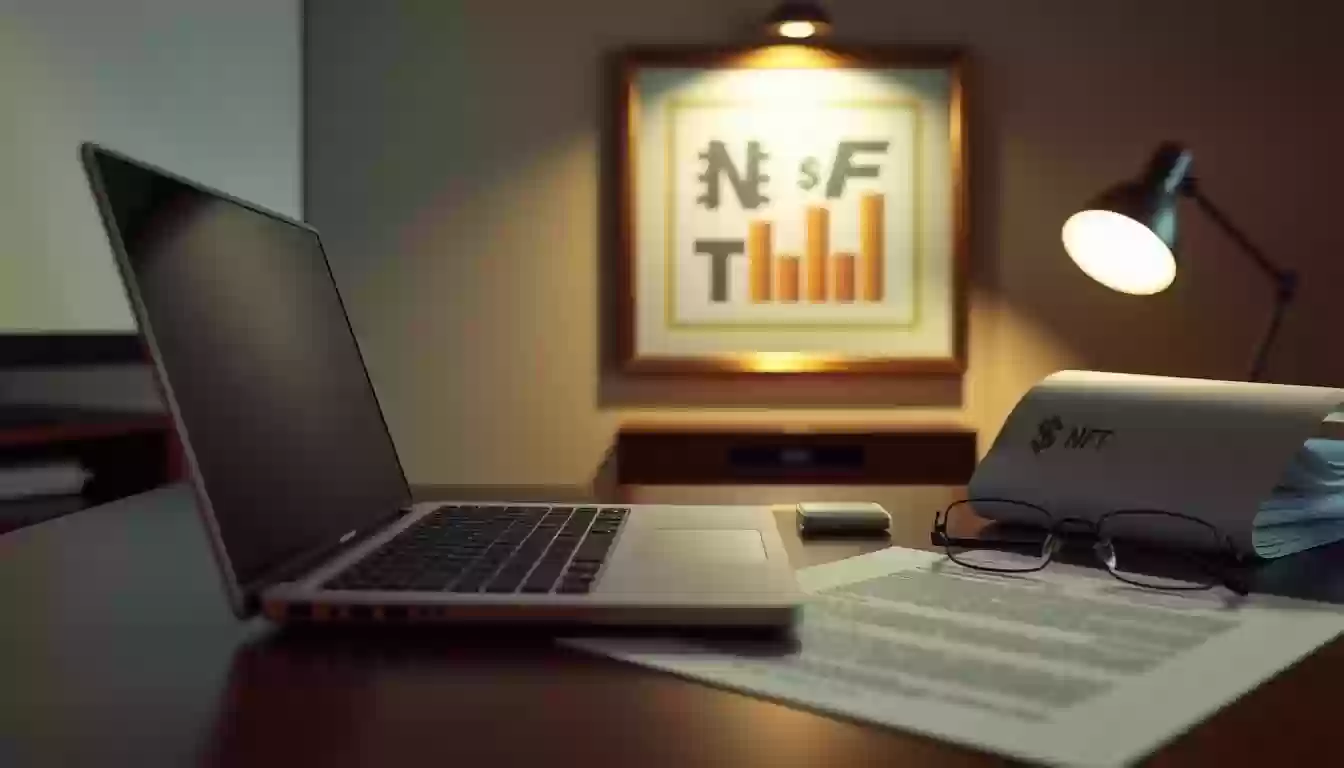
For artists and buyers, understanding these legal nuances is vital. Clear contracts and registering copyrights can mitigate risks. As the digital market evolves, so too must the legal systems governing it.
Environmental and Energy Considerations
As the popularity of non-fungible tokens continues to grow, so does the discussion around their environmental impact. Blockchain systems, which power these tokens, have faced criticism for their high energy consumption. This section explores the environmental implications and ongoing efforts to make these systems more sustainable.
Assessing Blockchain Energy Consumption
The energy usage of blockchain systems is a significant concern. While traditional cryptocurrencies like Bitcoin are often criticized, the process of creating and trading non-fungible tokens also contributes to overall energy consumption. For instance, the Ethereum blockchain, widely used for these tokens, has faced scrutiny for its substantial energy footprint.
Comparing this to other blockchain systems, the energy demands of non-fungible token transactions are notable. However, it's important to recognize that these systems are evolving. Innovations like proof-of-stake protocols and layer-2 scaling solutions aim to reduce energy usage while maintaining security and efficiency.
Initiatives such as the Ethereum Merge have already shown promise in reducing energy consumption by over 99%. These advancements highlight the potential for blockchain technology to become more environmentally friendly without compromising its core benefits.
Looking ahead, the record of innovation in this space suggests that sustainability will remain a priority. As these systems continue to evolve, we can expect even more efficient solutions to emerge, ensuring that the benefits of non-fungible tokens are accessible while minimizing their environmental impact.
NFTs Ownership and Trading Platforms
As the digital economy evolves, platforms that facilitate the buying, selling, and trading of unique digital assets have become essential. These platforms are pivotal in shaping the nft market and enabling the growth of a vibrant ecosystem.
Leading Marketplaces and Digital Exchanges
OpenSea and Rarible are two of the most prominent platforms in the nft market. OpenSea, often referred to as the "eBay of NFTs," supports a wide range of digital assets, from art to in-game items. Rarible, on the other hand, emphasizes community-driven curation, allowing users to discover and trade unique digital assets seamlessly.
These platforms offer user-friendly interfaces and robust tools for both creators and collectors. They provide features like smart contract integration, royalty distribution, and decentralized governance, making them indispensable in the nft market.
Future Trends in NFT Trading
The future of NFT trading is poised for innovation. Fractional ownership, where multiple individuals can own a share of a single digital asset, is gaining traction. This model makes high-value assets more accessible and could democratize investment opportunities.
Another emerging trend is the rise of decentralized exchange systems. These systems eliminate intermediaries, allowing for peer-to-peer transactions with greater transparency and efficiency. As technology advances, we can expect even more innovative solutions to emerge.
Conclusion
As we navigate the ever-changing digital world, non-fungible tokens (NFTs) have emerged as a transformative force, reshaping how we perceive ownership and value in the digital realm. From their humble beginnings in early projects like Quantum and CryptoKitties to their current role in revolutionizing industries, NFTs have proven to be more than just a fleeting trend.
Their impact spans across digital art, gaming, music, and film, offering creators new avenues for monetization and fans unique ways to engage with content. However, this growth also brings challenges, such as environmental concerns and legal complexities. The energy consumption of blockchain technology and the lack of regulatory frameworks are crucial issues that must be addressed to ensure sustainable and secure growth.
Looking ahead, the future of NFTs is promising, with innovations like fractional ownership and decentralized exchanges on the horizon. While the market may face volatility and speculative pressures, the underlying technology continues to evolve, offering both opportunities and challenges for collectors and creators alike. As we move forward, it's clear that NFTs will remain a dynamic and influential force in the digital landscape.
FAQ
What is a non-fungible token?
A non-fungible token, or NFT, is a unique digital asset stored on a blockchain, representing ownership of a specific item like art or music.
How do NFTs differ from other digital assets?
Unlike cryptocurrencies, NFTs are non-fungible, meaning each has distinct value and cannot be exchanged like-for-like.
What is the Ethereum blockchain's role in NFTs?
The Ethereum blockchain is a popular platform for creating and trading NFTs, using smart contracts to manage ownership and transfers.
Can I create my own NFT?
Yes, artists can mint NFTs through platforms like OpenSea, converting their digital art into a unique token on the blockchain.
How do NFT marketplaces work?
Marketplaces like Rarible allow artists to sell NFTs, enabling buyers to purchase and own unique digital items securely.
Are NFTs a good investment?
NFTs can be valuable, but like any investment, they carry risks. Their value can fluctuate based on market trends and demand.
How do I buy an NFT?
You can purchase NFTs using a digital wallet funded with cryptocurrency, typically on platforms like Foundation or SuperRare.
What is the environmental impact of NFTs?
Creating and trading NFTs consumes energy, but efforts are being made to improve blockchain efficiency and reduce environmental impact.
Can NFTs be used for things other than art?
Yes, NFTs are used in gaming, music, and virtual real estate, showing their versatility beyond digital art.
How are NFTs different from cryptocurrencies?
Cryptocurrencies are fungible, while NFTs are unique, making them ideal for representing ownership of distinct items.
How secure are NFT transactions?
Transactions are secure due to blockchain technology, which records all activity immutably, ensuring ownership and transfer integrity.
